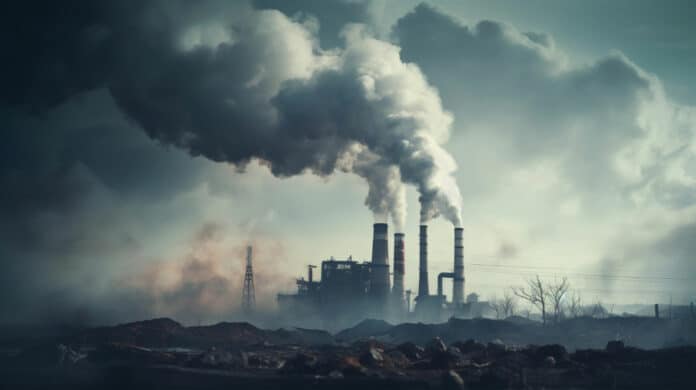
By Ashwini Sakharkar 19 Jul, 2024
Collected at: https://www.techexplorist.com/new-ambient-energy-driven-membrane-remove-co2-air/86287/
Direct air capture has been recognized as one of the ‘Seven chemical separations to change the world’ due to the immense challenge of separating carbon dioxide from air, given its dilute concentration (~0.04%).
“Dilute separation processes are the most challenging separations to perform for two key reasons,” said Prof Ian Metcalfe, Royal Academy of Engineering Chair in Emerging Technologies in the School of Engineering, Newcastle University, UK, and lead investigator. “First, due to the low concentration, the kinetics (speed) of chemical reactions targeting the removal of the dilute component are very slow. Second, concentrating the dilute component requires a lot of energy.”
Addressing these challenges, Newcastle researchers, in collaboration with colleagues from various prestigious institutions, have developed a groundbreaking membrane process. By harnessing naturally occurring humidity differences, the team has overcome the energy challenge and accelerated the transport of carbon dioxide through the membrane, marking a significant advancement in this critical field.
“Direct air capture will be a key component of the energy system of the future. It will be needed to capture the emissions from mobile, distributed sources of carbon dioxide that cannot easily be decarbonized in other ways,” explains Dr. Greg A. Mutch, Royal Academy of Engineering Fellow in the School of Engineering, Newcastle University.
“In our work, we demonstrate the first synthetic membrane capable of capturing carbon dioxide from the air and increasing its concentration without a traditional energy input like heat or pressure. I think a helpful analogy might be a water wheel on a flour mill. Whereas a mill uses the downhill transport of water to drive milling, we use it to pump carbon dioxide out of the air.”
The fundamental role of separation processes permeates every facet of modern life. Whether it’s the food we consume, the medications we rely on, or the energy sources powering our vehicles, these products undergo multiple separation processes. Moreover, these processes play a crucial role in waste reduction and environmental conservation, including the direct capture of carbon dioxide.
As we move towards a circular economy, the significance of separation processes only intensifies. In this context, direct air capture could be leveraged to supply carbon dioxide as a raw material for producing many of the hydrocarbon-based goods we currently depend on, all within a carbon-neutral or even carbon-negative framework.
Crucially, in our pursuit of meeting climate objectives such as the 1.5 °C goal outlined in the Paris Agreement, direct air capture, alongside the shift towards renewable energy and traditional carbon capture methods from sources like power plants, becomes imperative.
“In a departure from typical membrane operation, and as described in the research paper, the team tested a new carbon dioxide-permeable membrane with a variety of humidity differences applied across it. When the humidity was higher on the output side of the membrane, the membrane spontaneously pumped carbon dioxide into that output stream,” said Dr Evangelos Papaioannou from Newcastle University.
Utilizing X-ray micro-computed tomography with collaborators at UCL and the University of Oxford, our team accurately characterized the membrane structure, allowing for robust performance comparisons with other cutting-edge membranes.
A crucial aspect of our work involved modeling the molecular-scale processes within the membrane. Through density-functional-theory calculations with a collaborator from both Victoria University of Wellington and Imperial College London, we identified ‘carriers’ within the membrane that uniquely transport carbon dioxide and water, essential for driving carbon dioxide through the membrane from a low concentration to a higher concentration using the energy from a humidity difference.
Prof Metcalfe adds, “This was a real team effort over several years. We are very grateful for the contributions from our collaborators and for the support from the Royal Academy of Engineering and the Engineering & Physical Sciences Research Council.”
Journal reference:
- Ian S. Metcalfe, Greg A. Mutch, Evangelos I. Papaioannou, Sotiria Tsochataridou, Dragos Neagu, Dan J. L. Brett, Francesco Iacoviello, Thomas S. Miller, Paul R. Shearing & Patricia A. Hunt. Separation and concentration of CO2 from air using a humidity-driven molten-carbonate membrane. Nature Energy, 2024; DOI: 10.1038/s41560-024-01588-6

Leave a Reply